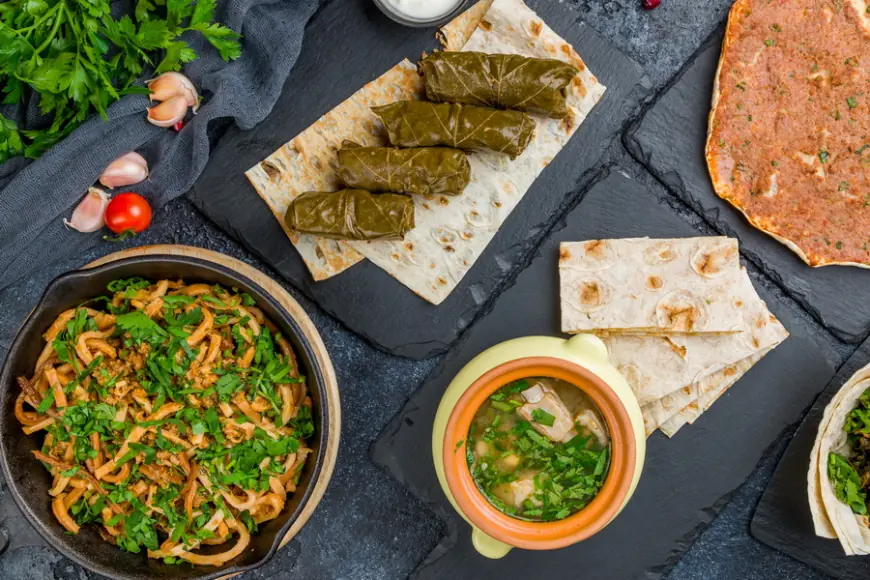A Complete Guide to Traditional Armenian Cuisine: Flavors, Recipes & History
Among all the cuisines in the world, the Armenian one is a colored expression of ancient history, varied geography, and ageless traditions of this land.

Among all the cuisines in the world, the Armenian one is a colored expression of ancient history, varied geography, and ageless traditions of this land. From the environs of the rugged Caucasian highlands to urbane kitchens, Armenian traditional foods somehow tell stories of perseverance, hospitality, and jubilation. This blog is an exploration into the appetizing world of Armenian cuisine, lively with famous recipes, ingredients, and personalities that have shaped it throughout the centuries.
Digging into the History of Armenian Cuisine
The roots of Armenian cuisine go undoing themselves back centuries, influenced by adjoining regions such as Persia, the Mediterranean, Russia, and the Middle East. Being among the oldest nations in the world, Armenia came up with its own culinary traditions during the Urartian Kingdom (9th-6th cent BCE), when methods such as fermentation, grilling, or baking in stone ovens were known.
Thus, the Silk Road was an important coming-in of Armenians to traditional dishes, whereby new spices, grains, and methods of preparing foods that were foreign to Armenians had become an inherent part of the Armenian kitchen.
Differences of Armenian Culinary Art
Fresh, local ingredients were the butter and oil of Armenian cooking, in general. Herbs such as mint, tarragon, and basil, all varieties of grains, usually bulgur and wheat, and vegetables aplenty, such as eggplant, tomato, and sweet pepper, are all there in the inventory.
An Armenian meal follows the law of balance and well-being, almost always featuring an array of appetizers or mezze before the heavy main of fruit or traditional dessert.
This outlines some characteristics:
-
Lavash: Thin-bread soft touch; baked in a tonir (clay oven). It is used for wrapping kebabs or dips.
-
The Herbs and Spices: In place of heavy sauces, Armenians prefer herbs, garlic, and lemon to coax out the native flavor.
-
Preservation method: Pickling and drying are commonly used methods of food preservation, particularly for vegetables, fruits, and meats.
Must-Try Armenian Traditional Dishes
-
Khorovats (Armenian BBQ): Khorovats is a grilled over an open flame national treasure! Being done with marinated pork, lamb, or chicken, and sometimes grilled vegetables this brings people together in celebrations or even weekend gatherings.
-
Dolma (Stuffed Grape Leaves or Vegetables): Meat is minced and then mixed with rice, herbs, and spices, before they are either wrapped in grape leaves or stuffed into vegetables like bell peppers and eggplants. Dolma should be eaten hot with yogurt and garlic.
-
Harissa: Evaluated over cracked wheat and slowly cooked chicken or lamb with deep religious and cultural connotations, harissa is served mostly during Easter and a few special commemorative days.
-
Spas (Yogurt Soup): This easy winter soup includes yogurt, wheat (or rice), and herbs such as mint. It's served chilled in summer.
-
Zhingyalov Hats: Considered a special treat from Artsakh, this is more of a flatbread stuffed with a filling that can have up to 20 different herbs and greens. A vegetarian foodie treasure packed with flavor and nutrients.
-
Basturma: The beef is salted, air dried, and highly seasoned with spirituous aromatics. Very thin slices of basturma are to be served as snacks with bread and cheese.
-
Ghapama: A few kinds of pumpkin are baked with rice for stuffing amid dried fruits, nuts, and honey; it is served at New Year's celebration and Christmas.
-
Manti (Armenian dumplings): Boat-shaped dumplings filled with spiced mincemeat, baked golden, and served with tomato sauce mixed with garlic-yogurt and mint.
-
Pakhlava: Pakhlava is known throughout the region and consists of layers of filo dough, nuts, and a spiced syrup cooled down with cloves and cinnamon.
-
Walnut Sujukh: Seriously different from the sausage of the same name, sweet sujukh is prepared by dipping walnut strings into thickened grape juice and drying them into a chewy candy-like form.
Armenian Hospitality & Culinary Traditions
Food in Armenia is beyond nourishment is an expression of love and community. Indeed, guests are dearly treated, and an array of Armenian-patriotic dishes put in front of them at the table is considered by the hosts to be their very expression of generosity. Meals are long events with toasts, music, and storytelling filling the air with delight.
Food remains inseparable from festivals, religious holidays, and family gatherings. Any occasion recognized by the Armenians would be associated with certain dishes: Easter chorek, Christmas ghapama, or New Year tolma!
Exploring Armenian Cuisine Today
Modern Armenian restaurants around the world are helping introduce this rich culinary heritage to new audiences. In Armenia, some time-tested recipes with a contemporary twist are being recovered with an emphasis on organic farming and local produce.
Whether it is a home-cooked dinner served in Yerevan or enjoying khorovats in one of the restaurants scattered across the diaspora, Armenian cuisine is an experiential tradition full of flavor and love.
Chefs and food lovers continue to put a modern spin on classic dishes by using local ingredients from their land while experimenting with culinary techniques from around the world to build an innovative kitchen that, one way or another, is still paying homage to its roots. This evolving cuisine thus celebrates the soul of Armenian culture with creations such as fusion tolmas and plant-based zhingyalov hats for the remedies of today's taste.
What's Your Reaction?
 Like
0
Like
0
 Dislike
0
Dislike
0
 Love
0
Love
0
 Funny
0
Funny
0
 Angry
0
Angry
0
 Sad
0
Sad
0
 Wow
0
Wow
0
















































